This Connecticut native plants list can help you design the best flower garden. Creating a beautiful garden outside your home is a great way to add curb appeal while also creating a sanctuary for the local fauna. Birds, butterflies, bees, and other pollinators, and even insects and small mammals are all crucial to the local environment.
When choosing the best plants and flowers for your garden in Connecticut, consider plants that are native to your specific area. Different parts of the state may have different hardiness zones and even different parts of your lawn could have soil and sun differences. Let’s explore this more.
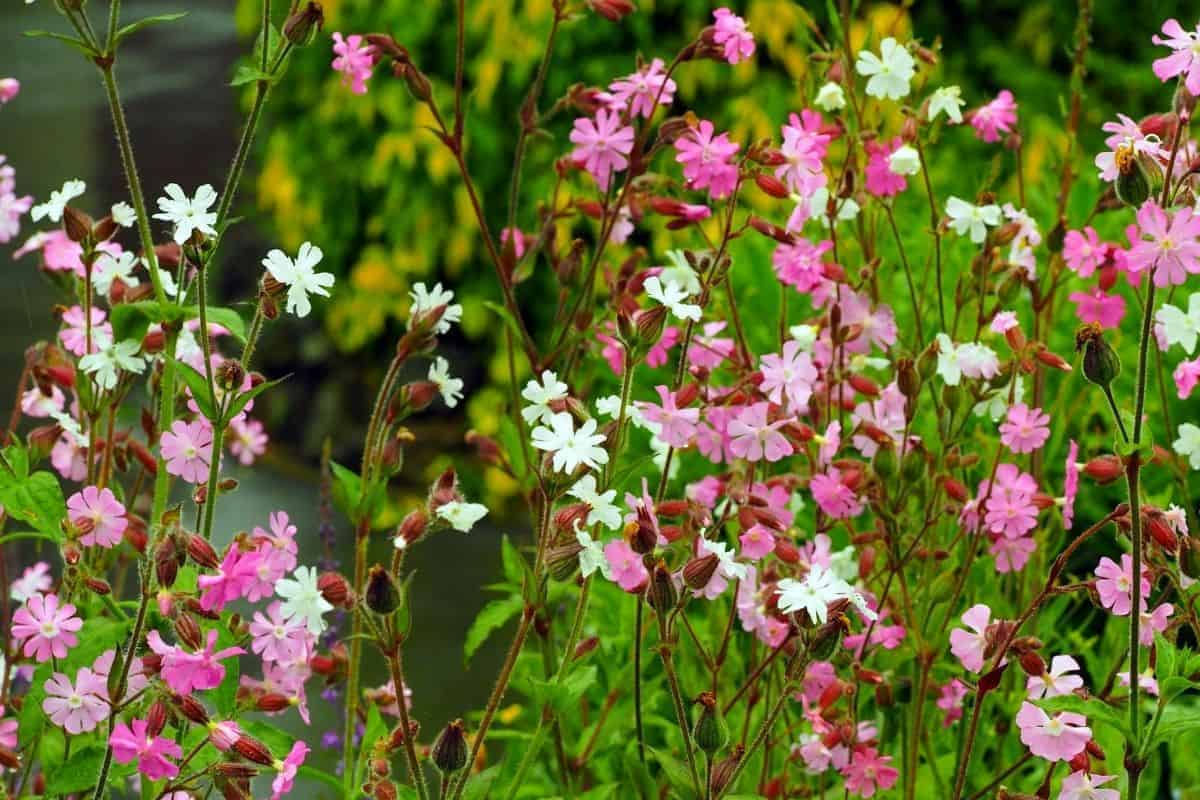
Understanding Native Plants
Before you can choose the right plants for your garden, it’s important to understand native plants. What are they and why are they so important to local ecosystems?
First and foremost, when gardening with native plants, you should never take these plants from the wild. It’s essential to the environment that they stay where they have grown. Instead, you should look for local nurseries that carry native plants and then bring those home and properly plant them.
Choosing native plants means you will not have to do as much maintenance and upkeep once you plant them, but it also means you’re doing a service to the local ecosystem. Native plants provide food and shelter for local wildlife. Native plants also create biodiversity and increase natural heritable and scenic values.
Connecticut Native Plants List
Here are some top picks for native plants that will look beautiful in your garden:
1. Pearly Everlasting (Anaphalis margaritacca)
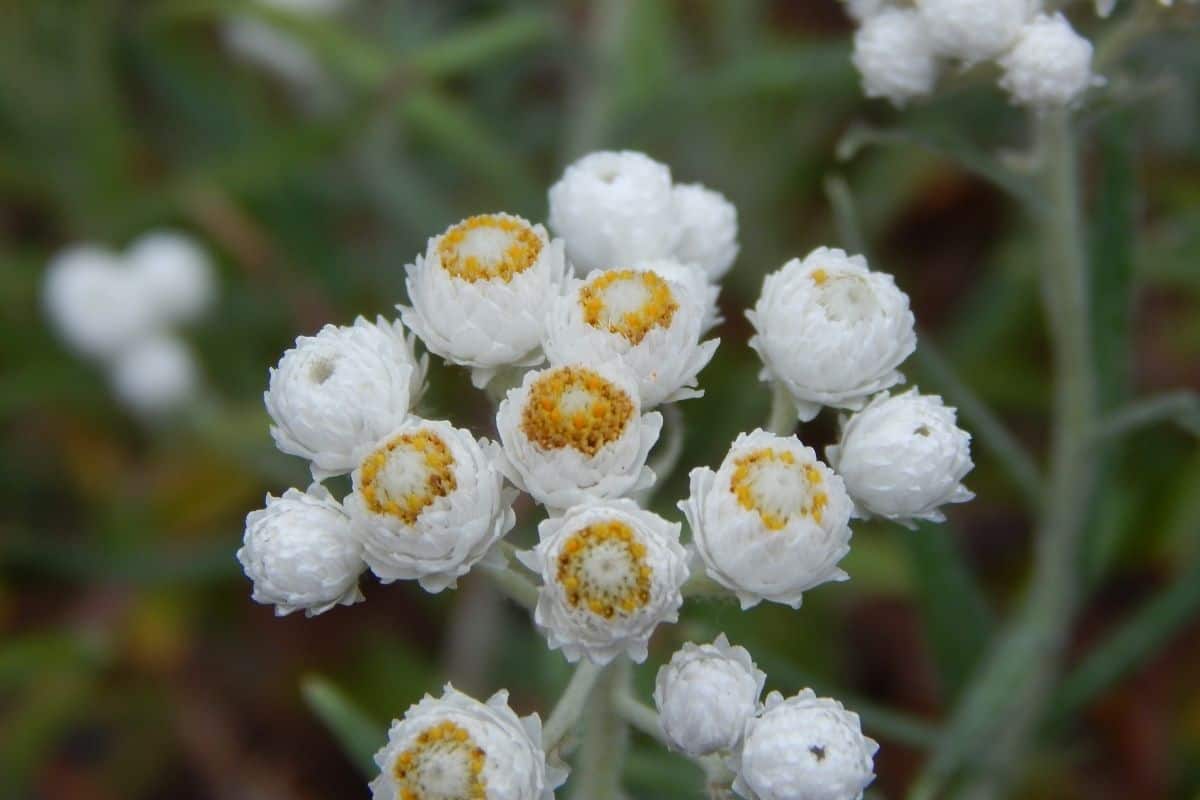
Pearly everlasting is an Asian and North American species of flowering perennial. It is native to the area and related to the sunflower family. While it is not a true sage, pearly everlasting is sometimes used as a local substitute for sage. It grows about three feet high, and the leaves are narrow, lance-shaped, and have a white, wooly underside.
It’s drought-tolerant and prefers full sun and dry soil conditions. It has separate male and female flowers, and they can take on gender-specific shades of yellow. Butterflies love them, making them a great choice in your garden.
2. Wild Red Columbine (Aquilegia canadensis)
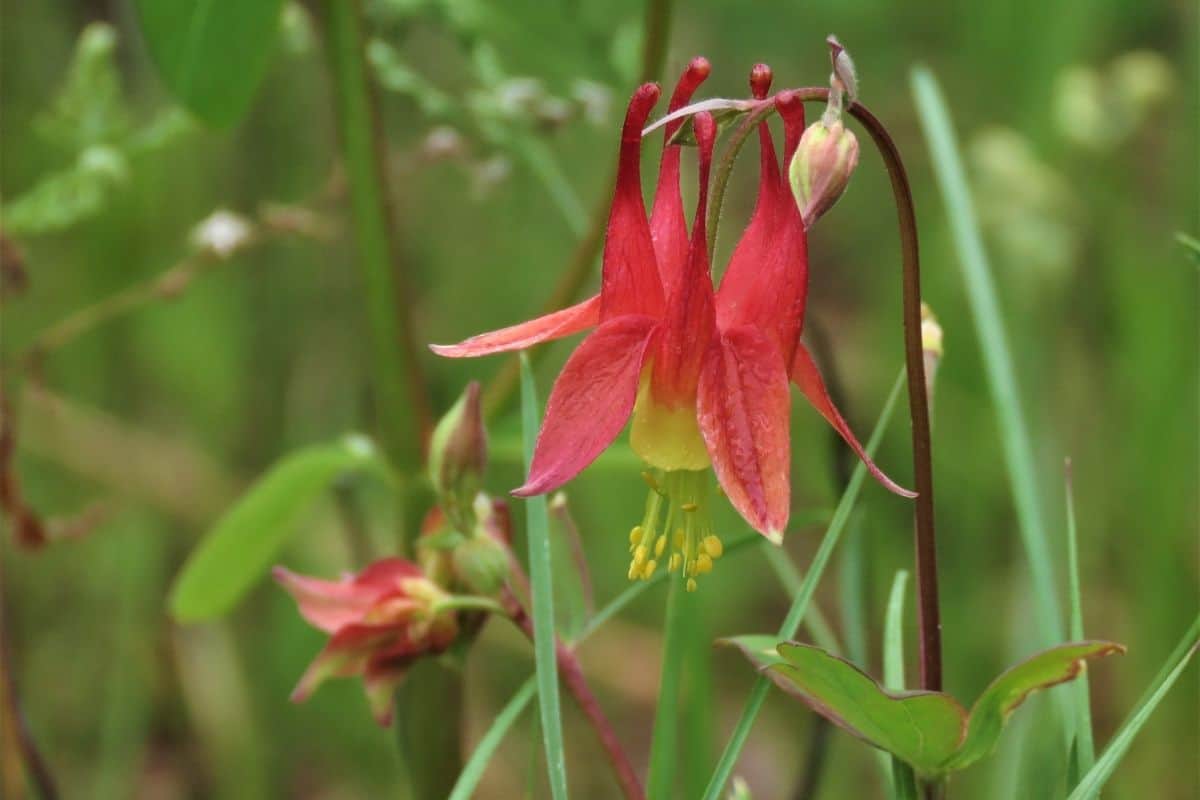
Wild red columbine is a flowering plant in the buttercup family. This perennial likes woodlands and rocky slopes and it’s well known in the area for its red and yellow flowers. It grows from 1-2 feet tall, and the flowers are 1-2 inches long. It flowers from April to July.
Also called Rock Bells, this flower likes full to part sun and does very well in a partial shade area. It likes thin, sandy, and well-drained soil kept dry to lightly moist. The distinctive flowers will really pop into your garden.
3. Swamp Milkweed (Asclepias incarnata)
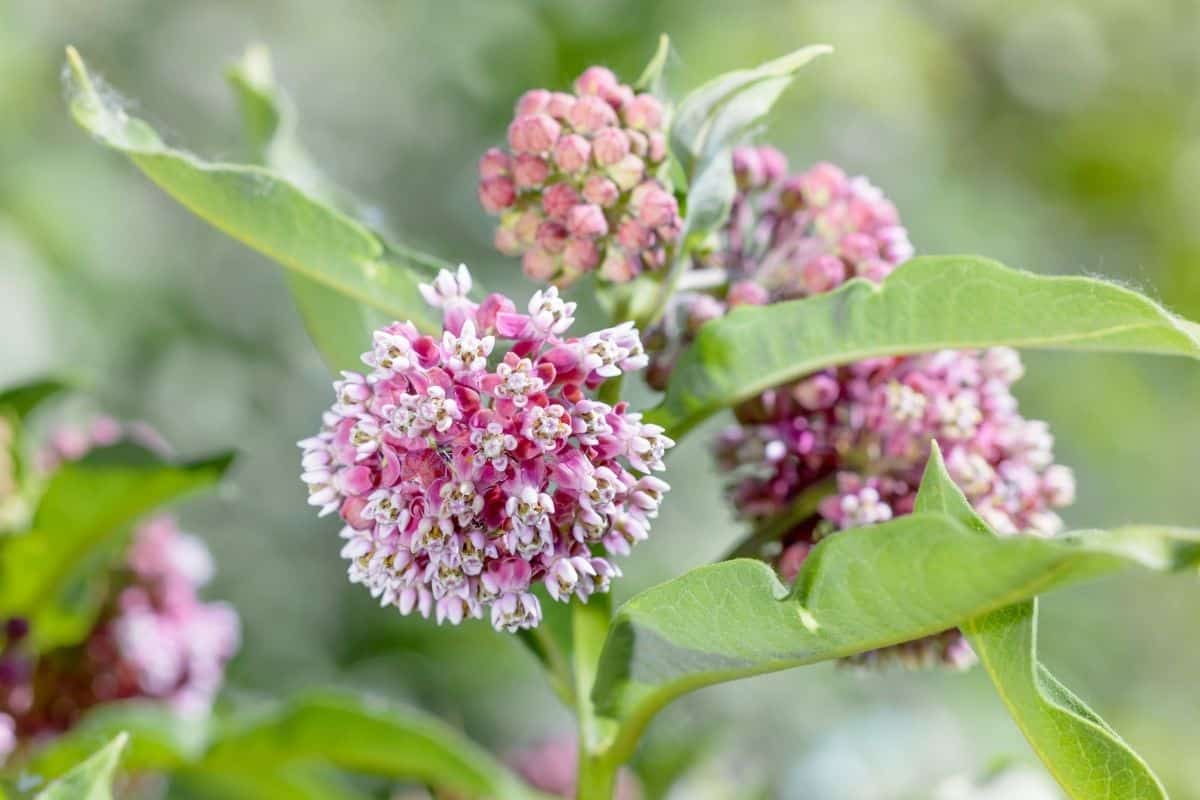
Another native plant choice is swamp milkweed. It has very large, showy blossoms that are easily recognizable and look great in any garden. This perennial can grow from 2 to 5 feet in height. The rounded leaves are long and narrow with a tapered point. The leaves are green, but when exposed to full sun, might look a bit purplish.
Swamp milkweed blooms from June through October in pretty pink or purple colors. It needs a lot of water, sun with part shade, and moist to wet soil. It’s great as an ornamental, good for wildlife, and has fragrant flowers that attract butterflies and hummingbirds that are fun to watch in your garden.
4. Smooth Aster (Aster laevis)
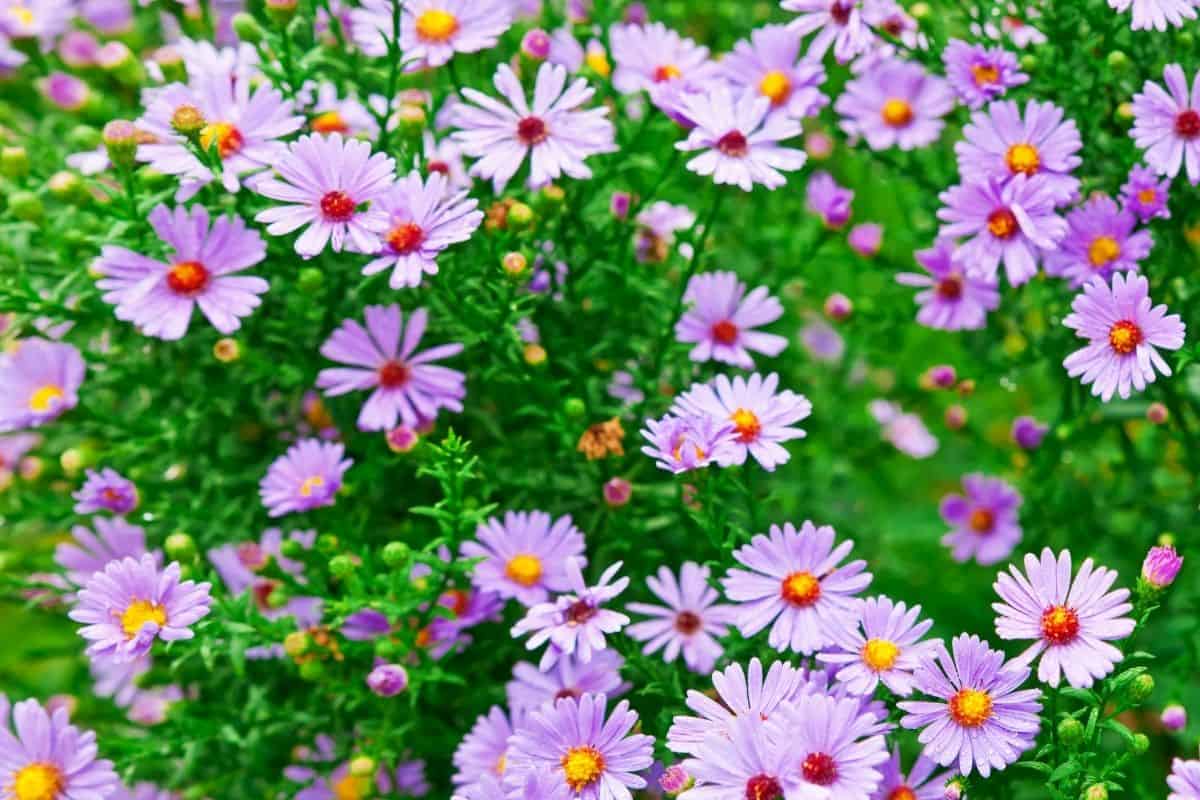
Smooth aster is also on our list for Connecticut plants. There are several types of aster in the area, but what we like about this one is that it’s hardy, frost-resistant, and keeps blooming often late into the year, as late as November.
The lavender-blue flowers with a yellow center take on a star-like shape that is very easily recognizable and look beautiful in any garden.
5. New England Aster (Aster novae-angliae)
Connecticut is also home to New England aster, another type of aster that looks pretty in the garden and does really well in this area. New England aster looks very similar to smooth aster. It blooms in the fall with rich, violet flowers that butterflies love. This is a large, showy flower that can grow up to six feet high.
It will thrive in full sun or partial shade and almost all soil types, except the super dry. It’s fairly low-maintenance and blooms late in the season, making it one of few native nectar sources for pollinators this late into the year.
6. Marsh Marigold (Caltha palustris)
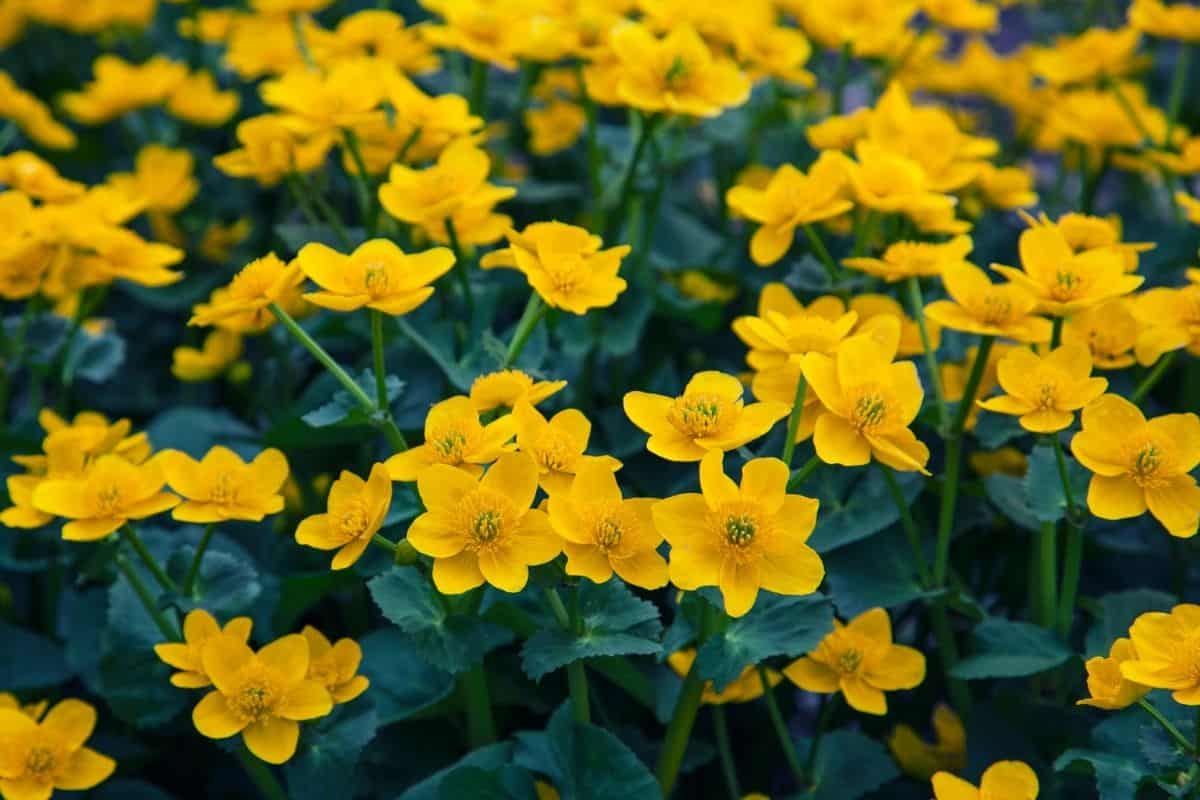
Marsh marigold is also commonly known as cowslip, kingcup, or cowflock. It has the classic yellow-gold marigold colors, and it grows near marshlands, ditches, fens, swamps, and other wet areas. It prefers full sun or very light shade. They can grow from 8-24 inches tall. The flowers can have from 50 to over 100 stamens.
It’s a common choice when used in landscaping or as a groundcover and looks great as a background plant in your garden. They do like oxygen-rich water near the surface of the soil but once established in the right location, are fairly low-maintenance.
7. Turtlehead (Chelone glabra)
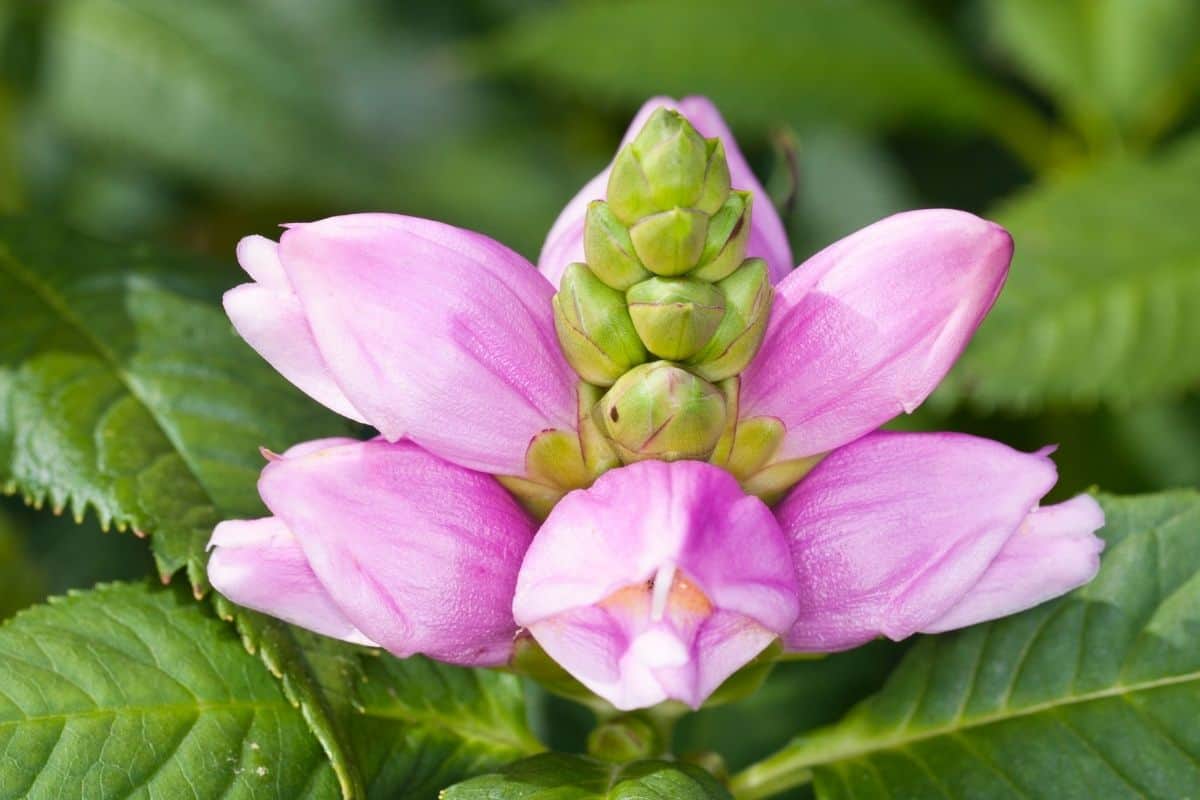
Turtlehead is next on our list. The common name comes from the flower petals that take on the shape of a turtle or tortoise head. This smooth plant can grow to about 3-6 feet high. The blooms are usually white or pink, and they bloom throughout July, August, and September.
Natively they are found in marshy areas, stream banks, wet ditches, and swampy areas. They would do well in the same places as marsh marigolds because they need moist to wet soil. They like full sun or some part shade.
8. Boneset (Eupatorium perfoliatum)
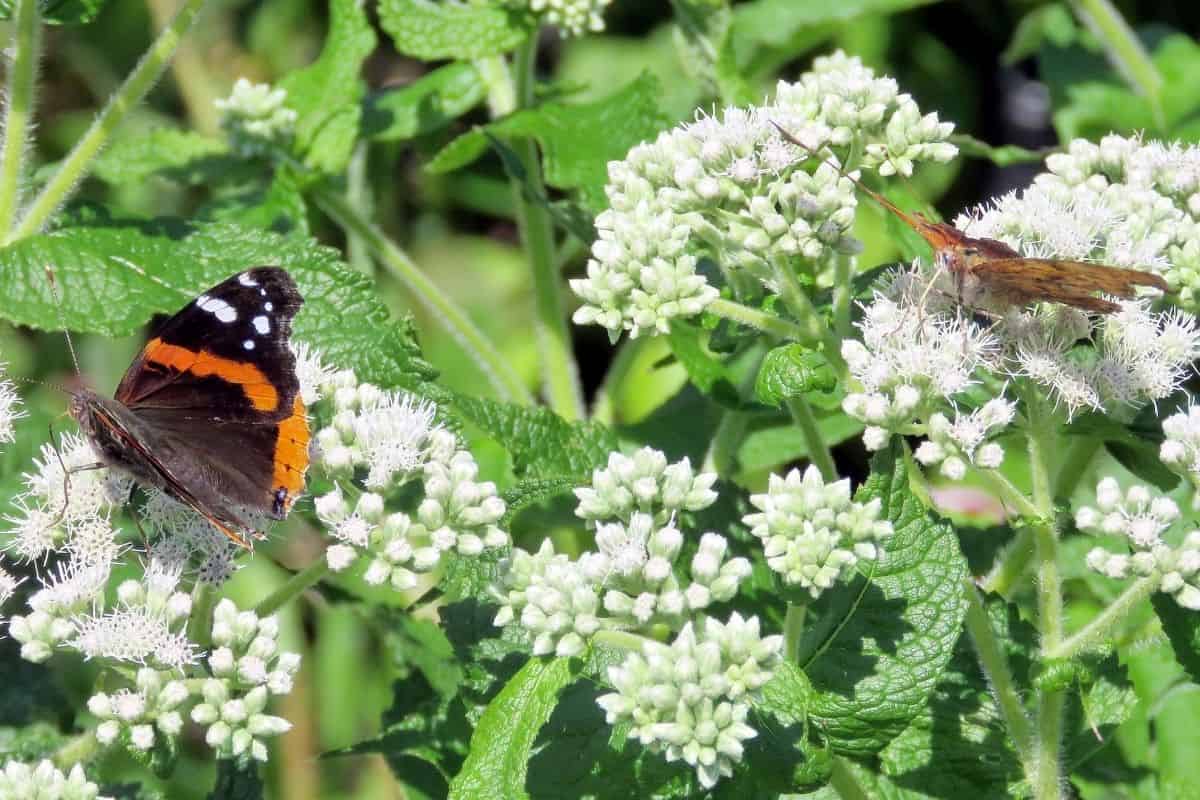
When you want something native that will thrive on its own without a lot of maintenance, boneset is another great choice. It has tiny white flowers that are arranged in clusters at the top of 3–6-foot stems. These flowers have a bit of a fuzzy appearance to them, making them look hairy.
Boneset is in the aster family and will do well with other asters in your garden. It blooms from June to October, likes sun or part shade, moist and wet soil, and is beneficial to the environment. It provides a useful nectar source for pollinators and will attract birds and butterflies to your garden.
9. Pale-leaved Sunflower (Helianthus strumosus)
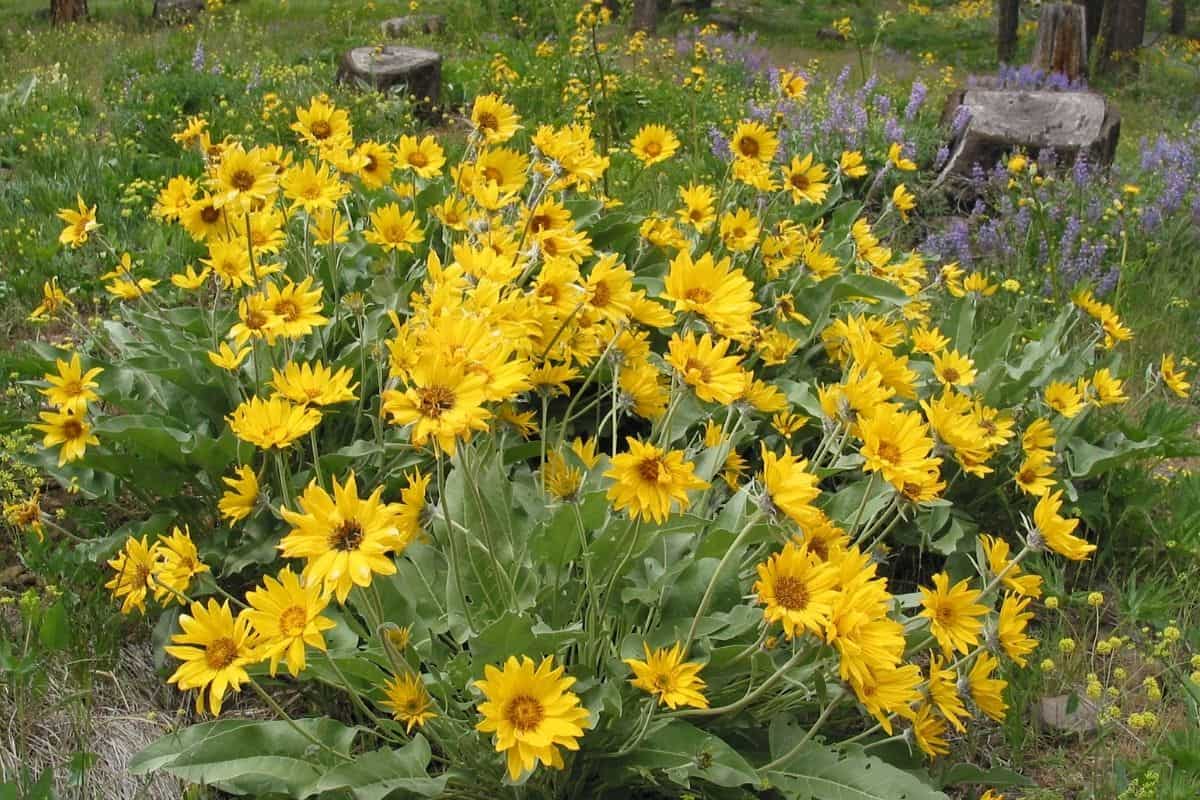
Pale-leaved sunflower, also known as woodland sunflower, is a stunning, eye-catching flower that will really make a statement in your garden.
It’s similar in appearance to other types of sunflowers and can grow to three feet high. It likes full or partial sun, medium to medium-wet soil, and it blooms in July-October. The bright yellow blooms are the signature feature of this sunflower.
10. Yellow Stargrass (Hypoxis hirsute)
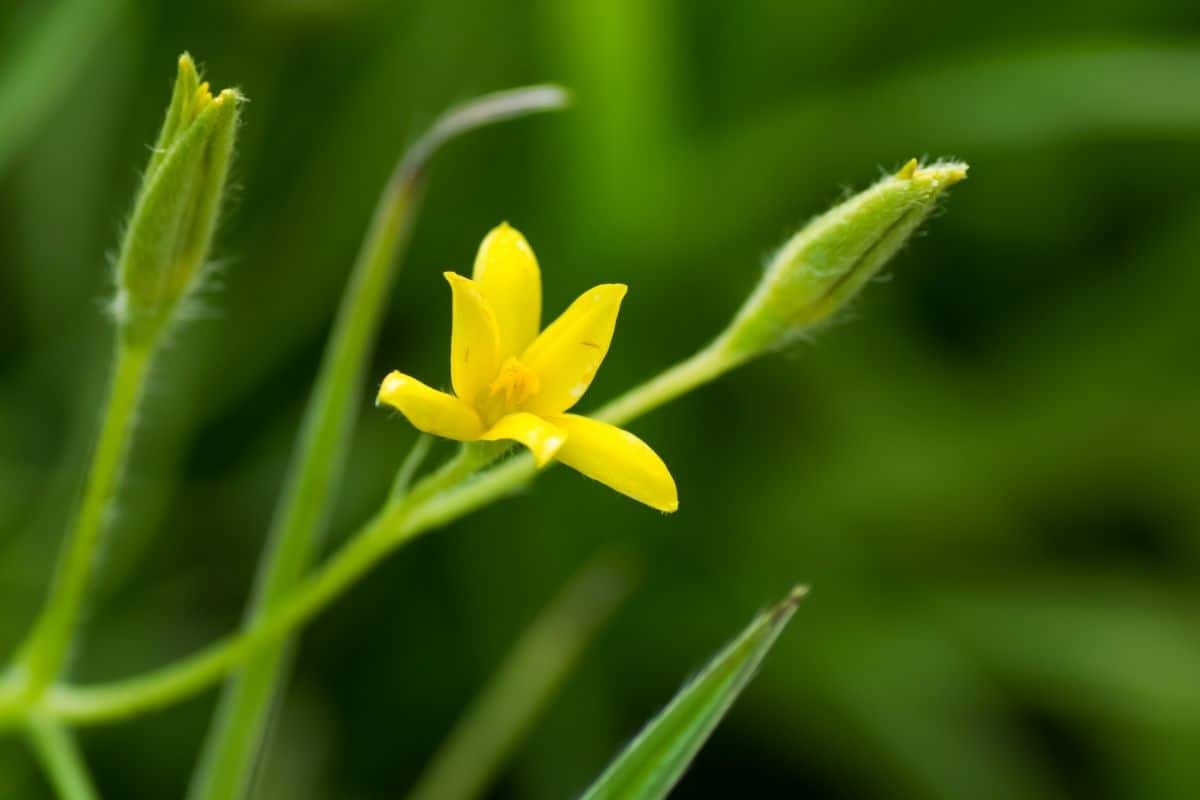
Yellow stargrass is another flowering plant native to Connecticut that will look beautiful in your garden or landscaping. Also yellow in blooms, it has a paler yellow than the sunflower and the petals make a star shape. Sometimes yellow stargrass also has a nice fragrance to it.
Blooming typically happens in mid-spring to early summer and lasts for about a month. It likes full or partial sun, moist to slightly dry soil. It can spread a bit but is not really aggressive and won’t likely take over your garden. They attract bees and other pollinators.
11. Cardinal Flower (Lobelia cardinalis)
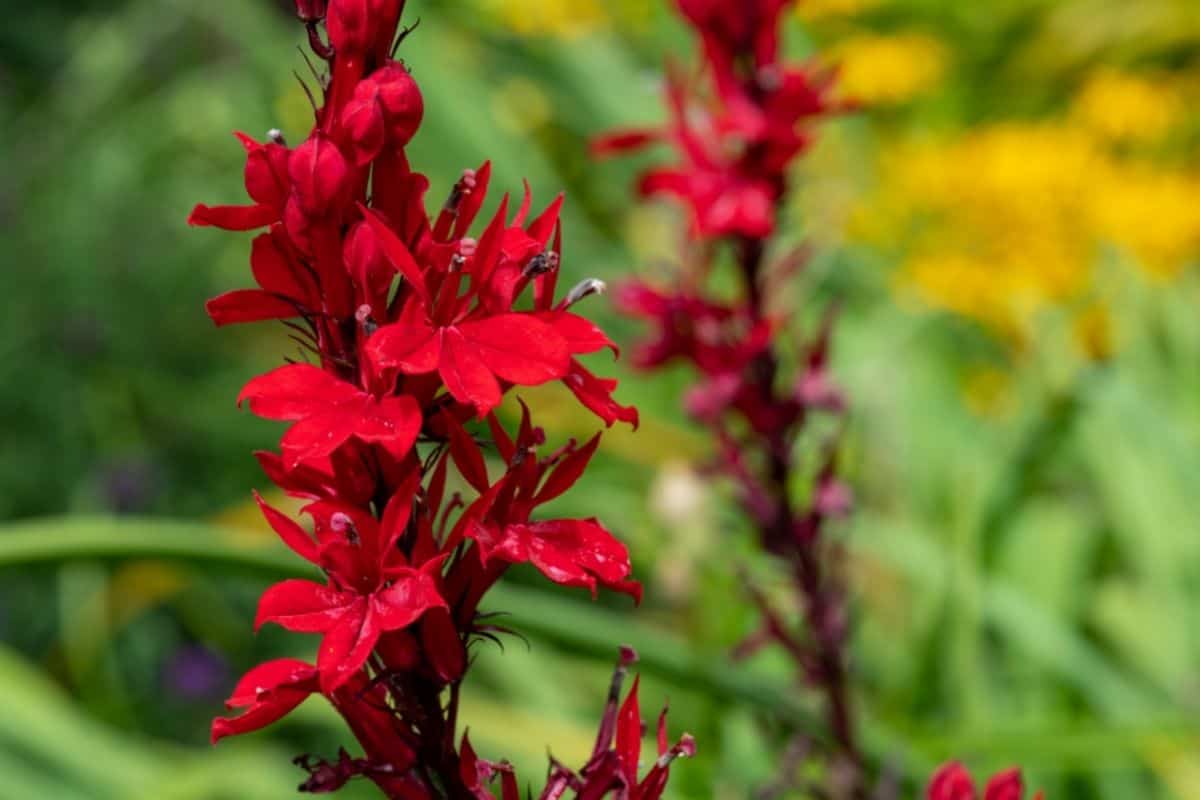
Cardinal flower is another native flower to Connecticut that will look beautiful in your garden. This flowering plant is in the bellflower family and its signature red flower is where it gets its name. They are a favorite of hummingbirds who find it easiest to get to the nectar inside the long, tubular flowers.
It can grow from 1-6 feet high, and the red flowers can grow to about 8 inches. It blooms from May to October and likes sun or part shade. Naturally in the wild, it will grow around ditches, ravines, stream banks, roadsides, prairies, and more. Although common, over picking has led to the decline of this flower in some areas.
12. Solomon’s Plume (Maianthemum racemosum)
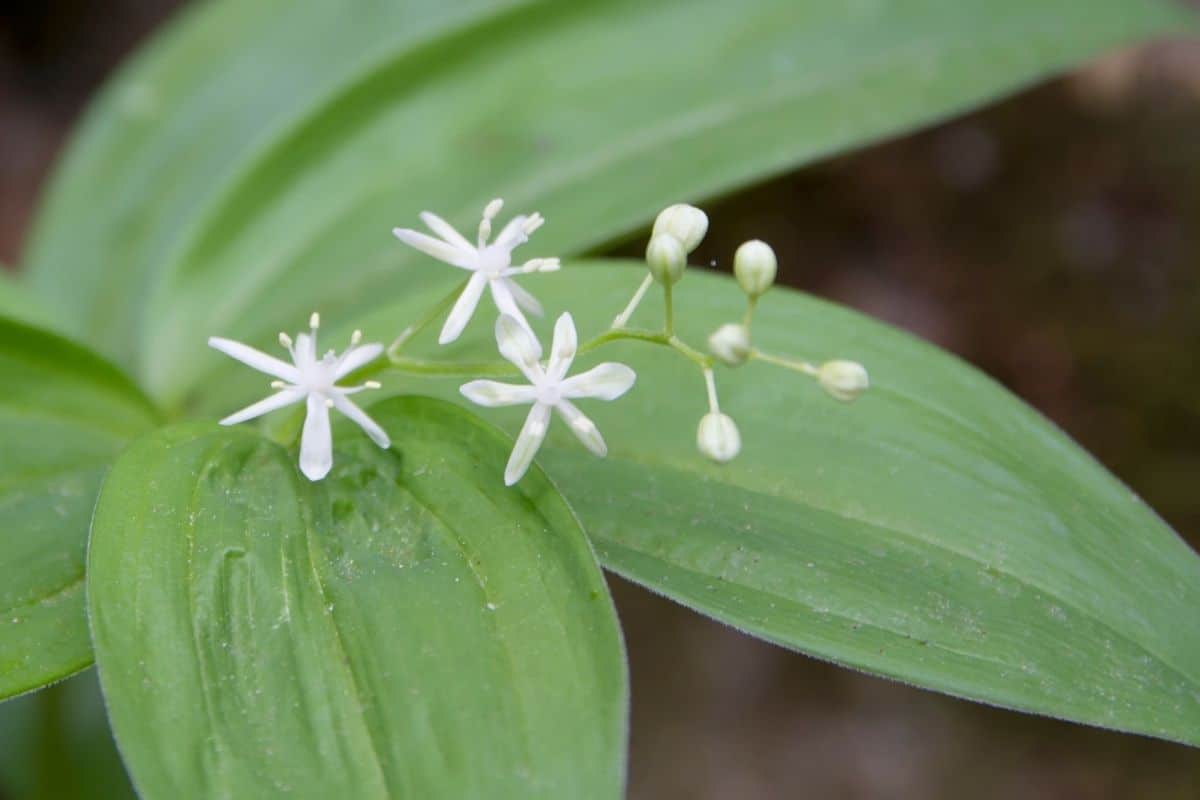
You might also consider Solomon’s plume for your garden. This native flowering plant has many common names, including false lily of the valley, false Solomon’s Seal, and false spikenard. It makes a nice choice for your garden or landscaping in shaded areas.
Sometimes it is slow to germinate or grow to maturity. You may need to give it more maintenance in the beginning until it is fully established. It can grow to about 2 feet and it blooms from April-June.
13. Starry Campion (Silene stellata)
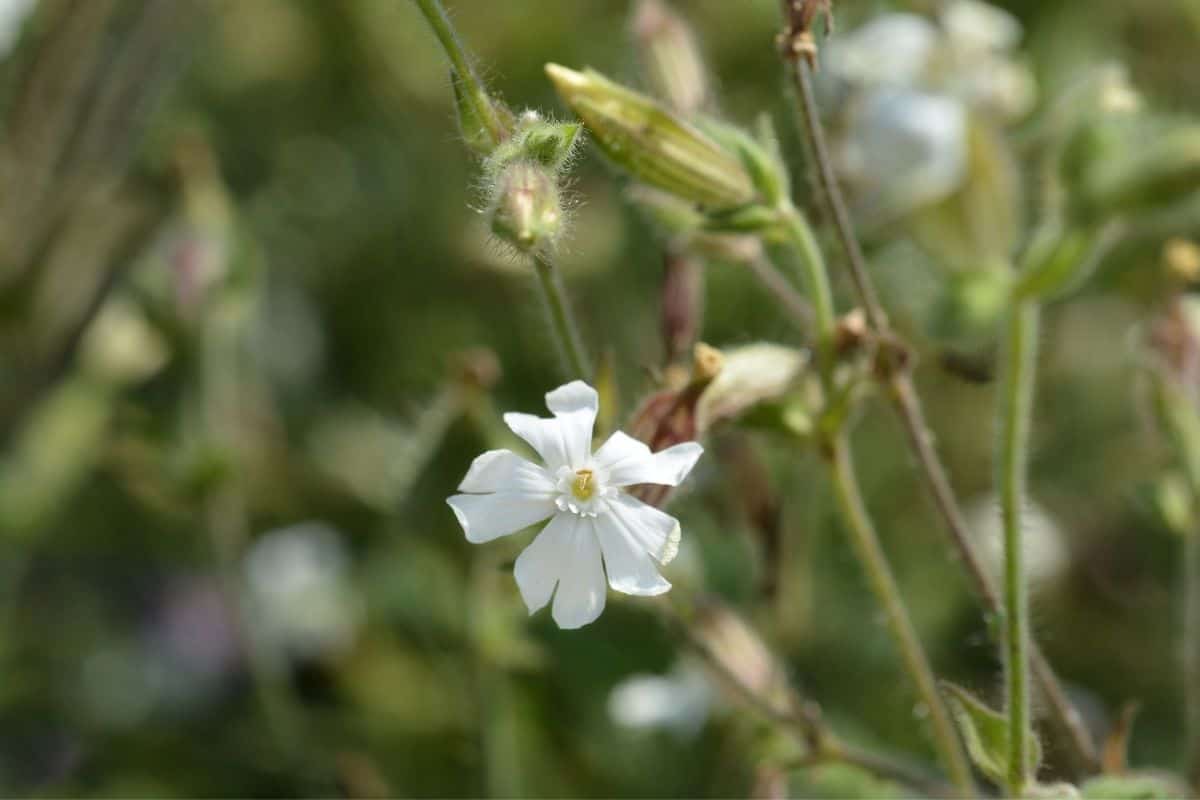
With starry campion, you get a beautiful flower and also can contribute something back into the local environment. Connecticut now considers this flower to be threatened as it is rare in the wild now. It grows naturally in the open woods and would do well in a woodsy garden or lawn environment.
It is very recognizable with its fringed white petals that stand out in the garden. It grows about 2-3 feet high and about ¾ of an inch across its flower. The white flowers bloom from June to September.
14. Blue Vervain (Viola pedata)
Blue vervain is the final flower on our list today, but certainly not the least. Sometimes also called birdfoot violet, blue vervain is a beautiful, low, clumped perennial that grows from 4-10 inches high. It has blue to purple- or violet-colored flowers that are about the size of pansies.
They bloom from March to June and like part shade or shade and dry soil. They are very beneficial to the birds and butterflies and look lovely in your garden.
Connecticut native plants list FAQ
Now that you know why native plants are great for your garden, and you also have a great list of beautiful flowers to start with, what’s next? Before you plan your garden or landscaping, let’s take a look at these commonly asked questions about native plants to Connecticut.
What are native plants used for?
Native plants are often used in gardens because they adapt well to the environment, require little to no maintenance once they are properly planted, and they are an asset to the local ecosystem. Throughout Connecticut, a lot of native wildlife’s natural habitats are being destroyed as more houses and businesses are being built. When you use native plants around your property, you bring some of that back to the area.
How sturdy are Connecticut native plants?
Most Connecticut native plants are very hardy when planted in their own natural climate. However, it’s important to choose the right flowers for your area and soil conditions and then to also be sure they are planted correctly. Proper care right after planting is essential. Once the plant is well established, it will typically do as well as it did in the wild.
How do I choose the right native plants?
When choosing native Connecticut plants, you want to pick those that are best for your specific location and that are available in local nurseries. You can check the Connecticut Native Tree and Shrub Availability List which cross-references native species with nurseries where they may be available.
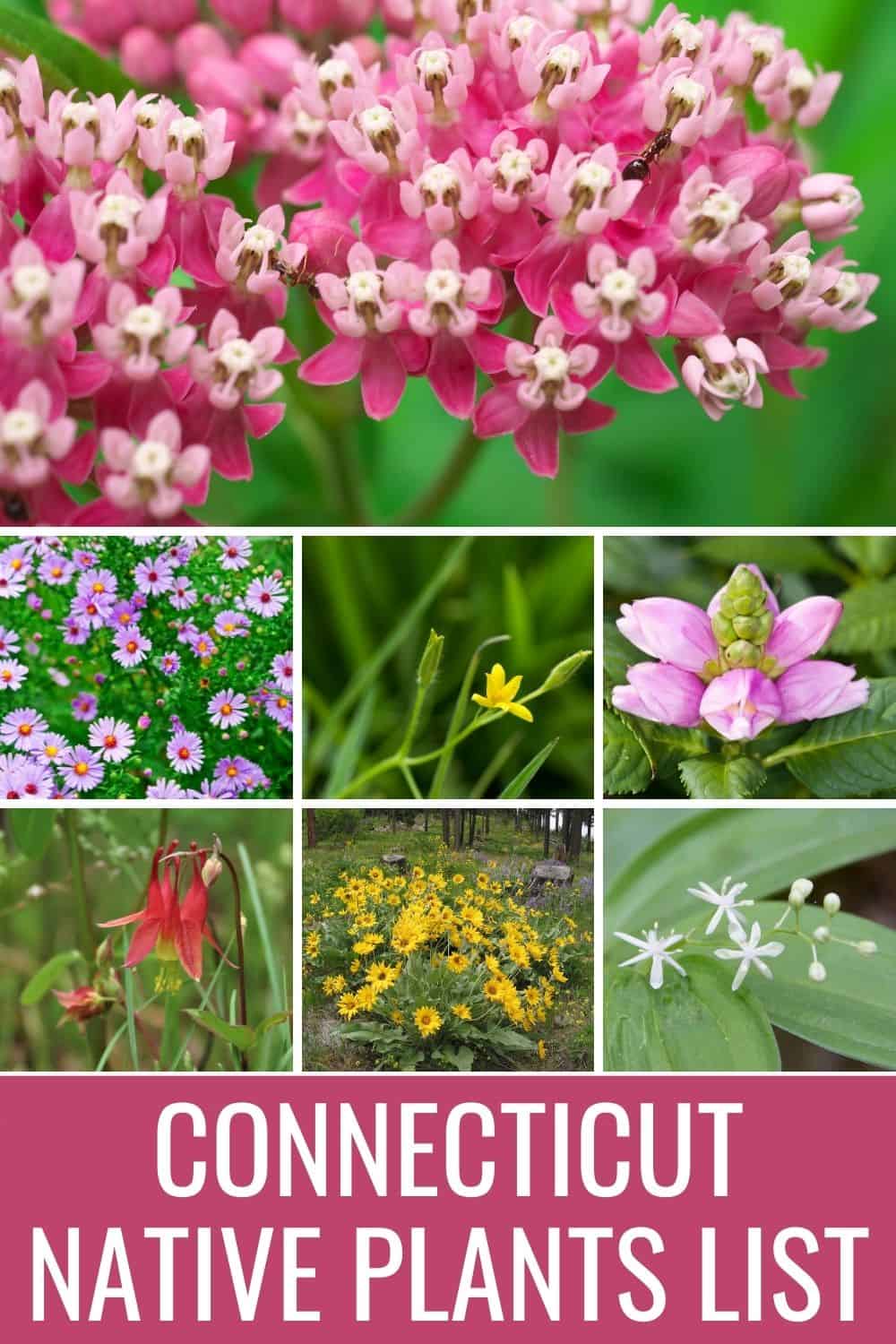

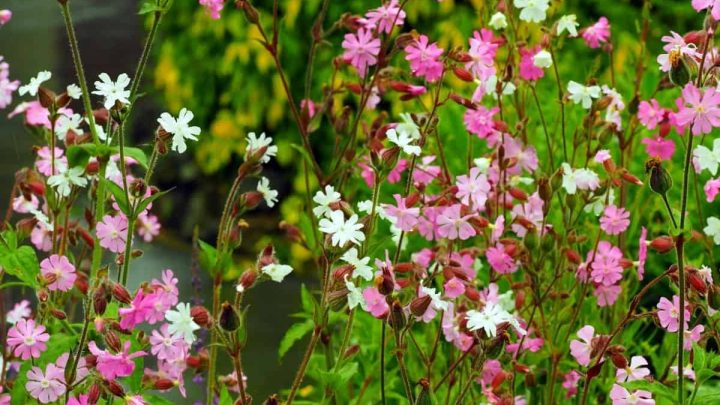



Caron Fox
Monday 22nd of August 2022
I’m moving to western Kentucky next month. Would love to learn about native plants for that area Thanks
Adriana
Tuesday 23rd of August 2022
Take a look at this: https://www.backyardgardenlover.com/kentucky-native-plants-list/
Best Landscaping Ideas For Your Home
Sunday 29th of August 2021
[…] Connecticut Native Plants List: 14 Beautiful Flower Garden Choices […]